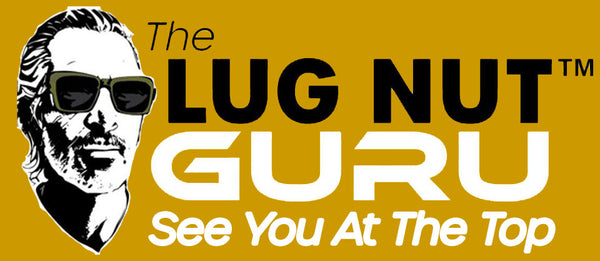Lug Nuts 101: Choose the Perfect Fit for Your Vehicle
Whether you’re replacing old lug nuts or upgrading your wheels, choosing the right lug nuts is key to safety and performance. Let’s walk you through the essentials step-by-step—no experience required.
1. Do You Have OEM or Aftermarket Wheels?
Your type of wheels determines the style of lug nuts you’ll need. Here’s how to tell:
- OEM (Factory) Wheels: These are the wheels your car came with when you bought it. They usually have the automaker's logo on the center cap. Use OEM or OE replacement lug nuts for the best fit and to ensure they work with your lug wrench. For a difference between OEM lugs and our OE replacement lugs check out this article on Guru Insights.
- Aftermarket Wheels: If you’ve replaced your wheels with custom designs or larger sizes, they’re aftermarket. These often require specialty lug nuts like spline drive or tuner-style. Check your wheel’s brand or manual to confirm what’s needed.
Unsure? Look at the wheel brand or style—OEM wheels often have the automaker's logo stamped on them, while aftermarket wheels may have a custom design or brand name (e.g., Enkei, BBS).

*Using the wrong lug nuts with your wheel can result in improper seating of the lug nut.
2. What Thread Size Do You Need?
The thread size is the best starting point to find the right lug nuts for your vehicle. Auto manufacturers often standardize thread sizes for a specific make and model, but changes can occur between generations.
- Common thread sizes: 14x1.5, 12x1.5, 1/2-20
- How to Find It: Use your vehicle's year, make, model, and sub-model for the most accurate results.
- Pro Tip: Use our Compatibility Tool for quick identification of your thread size.
3. What Is the Seating Style of Your Wheel’s Pilot Holes?
The seating style refers to the way the lug nut makes contact with the wheel’s surface.
-
Types of Seats:
- Mag Seat: A flat contact surface between the lug nut and wheel.
- Conical Seat: A tapered surface, often at a 60-degree angle, for secure fastening.
- Ball Seat: A rounded surface that matches the curve of the pilot hole.
- Flat Seat: A flat seat with a spinning torque retention washer.

